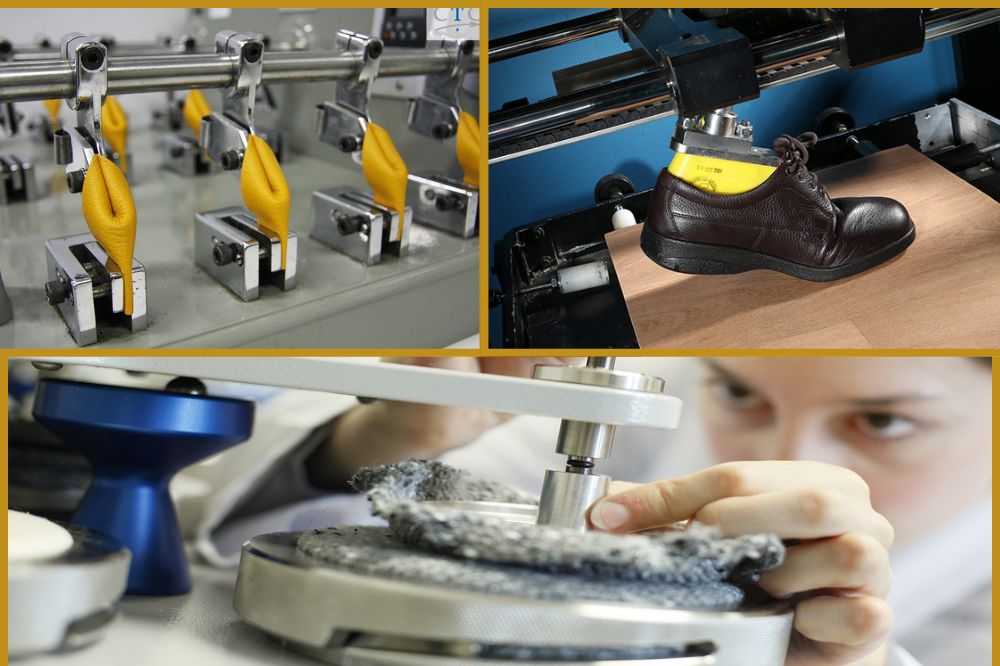Introduction
In the dynamic and diverse landscape of the textile industry, ensuring product safety, regulatory compliance, and adherence to quality standards is paramount. At the heart of this commitment lies the indispensable practice of chemical testing. This crucial aspect of textile manufacturing plays a pivotal role in upholding product quality, safety, and compliance with industry regulations.
The Significance of Chemical Testing
Textile chemical testing serves multiple essential purposes. Firstly, it acts as a guardian of consumer safety by detecting and quantifying harmful substances. Given the direct contact of textiles with the skin, these tests ensure that products are free from irritants or allergens. Moreover, they validate adherence to regional and application-specific regulations, encompassing safety, environmental considerations, and labeling requirements.
The commitment to rigorous chemical testing extends beyond consumer safety. It is a linchpin in maintaining product quality by evaluating various parameters such as colorfastness, strength, and resistance to external factors. This not only identifies manufacturing flaws but also enhances overall quality assurance, exceeding consumer expectations.
Objectives of Textile Chemical Testing
- Consumer Safety: Detection and quantification of harmful substances to ensure textiles are safe for direct contact with the skin.
- Regulatory Compliance: Adherence to regulations on restricted chemicals, regional standards, environmental concerns, and labeling requirements.
- Performance and Durability Evaluation: Assessing textile performance and durability to meet quality standards set by reputable manufacturers.
- Quality Assurance: Identification of manufacturing flaws and enhancement of overall product quality.
- Environmental Impact Assessment: Aligning with sustainability practices and regulations to minimize the ecological footprint.
Sample Collection and Preparation
Sample Collection:
- Random Sampling: Prevents bias by selecting samples from various locations in the production batch.
- Sample Size: This should be appropriate to accurately represent the entire batch; larger lots may require larger samples.
- Number of Samples: Often determined by lot size, particularly in larger production runs.
- Identification and Labeling: Meticulously label each sample for source and characteristic tracking during testing.
- Documentation: Maintain detailed records of the sampling process, including number, size, and method for transparency and quality control.
Sample Preparation:
- Cleaning: Eliminate contaminants or impurities before testing, using methods like solvent rinsing or distilled water washing.
- Drying: Thorough drying is essential to minimize the impact of moisture content, with methods such as air drying, oven drying, or freeze-drying.
- Extraction or Digestion: Used when specific chemical components must be isolated for analysis, involving solvents or chemicals.
Importance of Sample Collection and Preparation:
- Accurate Representation: Obtain a sample that accurately reflects the entire lot to avoid skewed test results.
- Maintaining Product Quality: Strict protocols help manufacturers maintain product quality and consistency, identifying anomalies early for corrective actions.
- Accurate Test Results: Clean, well-prepared samples lead to more accurate results, while contaminants or inadequate preparation can introduce errors.
- Documentation and Traceability: Proper documentation establishes traceability, ensuring transparency and well-documented sample origins.
- Regulatory Compliance: Many testing standards and regulations mandate specific sample collection and preparation procedures for legal and regulatory compliance.
Test Methods for Chemical Analysis in the Textile Industry:
1. Fiber Identification:
- Burn Test: Identifies fibers based on burn patterns and odors.
- Microscopic Analysis: Examines fibers under a microscope for unique physical characteristics.
- Chemical Solubility Tests: Determines fiber composition by testing reactions to specific solvents.
2. Colorfastness Testing:
- Washing: Assesses color resistance during laundering.
- Light Exposure: Tests resistance to fading due to UV light.
- Perspiration: Evaluates resistance to discoloration caused by perspiration.
- Rubbing: Measures color transfer resistance when rubbed against other materials.
3. pH Measurement:
- pH Meter: Measures pH directly using an electrode.
- Colorimetric pH Indicators: Estimates pH based on color changes in a pH-sensitive dye.
4. Formaldehyde Content:
- Spectrophotometry: Measures formaldehyde concentration through light absorption.
- Colorimetric Methods: Estimates formaldehyde concentration through color change.
5. Heavy Metal Testing:
- Atomic Absorption Spectrometry (AAS): Measures heavy metal concentration.
- Inductively Coupled Plasma Mass Spectrometry (ICP-MS): Detects multiple heavy metals simultaneously.
6. Azo Dye Testing:
- High-Performance Liquid Chromatography (HPLC): Separates and quantifies azo dye components.
7. Flame Resistance Testing:
- Vertical Flame Test: Assesses vertical flame propagation.
- Horizontal Flame Test: Measures resistance to spreading combustion.
8. Tensile Strength Testing:
- Assesses a textile’s ability to withstand tension forces until breaking point.
9. Dimensional Stability Testing:
- Evaluates how textiles maintain shape and size during use and after washing.
10. Abrasion Resistance Testing:
- Assesses textile durability against wear and tear caused by friction.
Laboratory Equipment and Instrumentation:
- Spectrophotometer: Measures light absorption/transmission for color analysis.
- Gas Chromatograph (GC): Separates and analyzes chemical compounds.
- pH Meter: Determines solution pH for skin comfort and dye stability.
- Atomic Absorption Spectrometer (AAS): Analyzes heavy metal concentrations.
Other Relevant Instruments:
- HPLC: Analyzes complex mixtures like dyes and pigments.
- XRF Spectrometers: Provides elemental analysis, and detects heavy metals.
- Infrared Spectrophotometers (FTIR): Pinpoints chemical composition.
- Tensile Testing Machines: Measure tensile strength and elasticity.
- Flammability Test Apparatus: Assesses textile flammability.
In summary, the diverse array of testing methods and sophisticated laboratory equipment ensures a comprehensive evaluation of textile products, covering aspects from fiber identification to safety and durability assessments. Accurate reporting is crucial for communicating these findings and ensuring adherence to quality standards and regulatory requirements in the textile industry.






